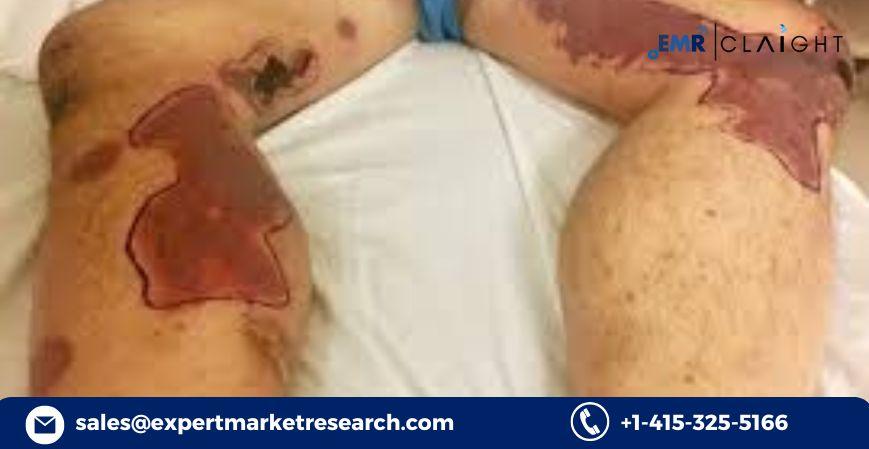According to Expert Market Research, the vasculitis drug pipeline is evolving rapidly as pharmaceutical and biotechnology companies focus on meeting the growing need for targeted treatments. Vasculitis, an umbrella term for a group of rare autoimmune diseases that cause inflammation of blood vessels, has an estimated annual incidence of 20–40 cases per million individuals in Europe and the United States, according to a study published in BMJ Journals. Given the condition’s chronic nature and variable clinical presentations, there is strong demand for innovative therapeutic solutions that move beyond standard corticosteroids and immunosuppressive agents.
For a deeper dive into the vasculitis drug pipeline, including molecule-specific analysis, trial phases, and market dynamics, visit Expert Market Research.
Market Trends and Key Drivers
The Vasculitis Drug Pipeline Analysis reveals several key market trends that are shaping the current landscape. There is a significant shift toward the development of biologics and targeted therapies—such as monoclonal antibodies and recombinant fusion proteins—that can selectively modulate immune responses with fewer side effects. These advances are particularly vital in treating subtypes such as granulomatosis with polyangiitis (GPA), eosinophilic granulomatosis with polyangiitis (EGPA), and microscopic polyangiitis (MPA).
The push for precision medicine in the Healthcare and Pharmaceuticals sector is a major driver of vasculitis drug development. This trend aligns with the broader movement toward immunologically targeted therapies in autoimmune disease management. Additionally, the designation of vasculitis-related indications as orphan diseases allows companies to benefit from regulatory incentives, including extended exclusivity periods, tax credits, and accelerated review pathways.
Case Studies and Industry News
A prominent example of pipeline progress is AstraZeneca's Benralizumab, which is being evaluated for EGPA. Originally developed for severe eosinophilic asthma, the drug’s mechanism of targeting interleukin-5 receptors is now being explored for its efficacy in reducing vasculitis-related inflammation.
Similarly, AbbVie is advancing trials for Upadacitinib, a JAK inhibitor that has shown promise in autoimmune conditions and is being studied for its potential applications in various vasculitis phenotypes. This is reflective of a broader industry pattern where drugs developed for larger immunological conditions are repurposed or adapted for rare diseases.
In recent industry developments covered by Reuters, Novartis has continued investing in its immunology pipeline, expanding research into indications including vasculitis through the development of monoclonal antibodies that may alter disease course.
For foundational knowledge about vasculitis and its clinical spectrum, Wikipedia offers a helpful overview, outlining the types, causes, and current treatments.
Market Size and Share
While the market size for vasculitis drugs remains relatively modest due to the rarity of the condition, the market share opportunities for effective and well-tolerated therapies are substantial. Companies that gain approval for new treatments targeting underserved subtypes of vasculitis can capture significant share within this niche segment, particularly given the high cost of biologics and the chronic nature of the disease.
Payers and healthcare systems are increasingly supportive of drugs that offer long-term remission or steroid-sparing effects, enhancing the commercial viability of pipeline products. Furthermore, increased physician awareness and diagnostic advancements are likely to expand the treatable population, thus enlarging the market over time.
Future Growth Potential
The future outlook for vasculitis drug development is promising, bolstered by the convergence of biological research, improved diagnostics, and supportive regulatory pathways. Innovations in gene therapy and immune system modulation hold transformative potential for long-term disease control and even remission.
Continued investment and clinical success in this area could redefine the standard of care for vasculitis patients and open new doors for biopharmaceutical firms operating in the rare autoimmune space. As such, stakeholders in market analysis, drug development, and health policy should closely watch this evolving segment.
Major Players in the Vasculitis Drug Pipeline
The Vasculitis Drug Pipeline Analysis highlights several pharmaceutical leaders and emerging innovators. The following companies are notable for their ongoing development efforts:
-
AstraZeneca plc
-
Abbvie Inc.
-
Novartis Pharmaceuticals
-
Smith & Nephew, Inc.
These firms are investing in therapies ranging from JAK inhibitors and monoclonal antibodies to next-generation biologics, aiming to improve patient outcomes while capturing emerging opportunities in the autoimmune disease space.
Market Segmentation
By Phase:
-
Late-Stage Products (Phase 3 and Phase 4): Includes advanced candidates with robust clinical data and near-term commercial potential.
-
Mid-Stage Products (Phase 2): Focused on dose optimization and early efficacy signals in specific vasculitis subtypes.
-
Early-Stage Products (Phase 1): First-in-human studies for innovative mechanisms of action.
-
Preclinical and Discovery Stage Products: Encompassing gene therapy and novel biologics under laboratory investigation.
By Molecule Type:
-
Recombinant Fusion Proteins
-
Small Molecule
-
Monoclonal Antibody
-
Peptides
-
Polymer
-
Gene Therapy
By Route of Administration:
-
Oral: Convenient administration, gaining preference in chronic treatment.
-
Parenteral: Used for biologics and complex molecules.
-
Others: Includes subcutaneous and intramuscular routes, depending on the drug formulation.

